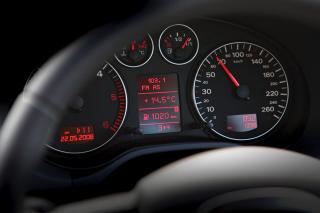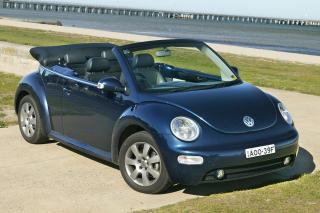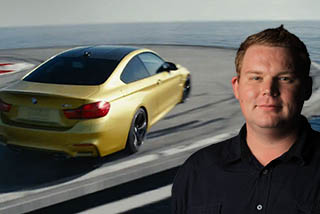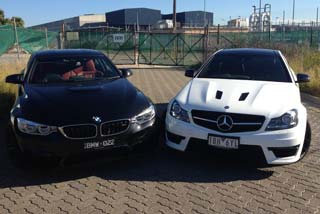
2004 Volkswagen Beetle Cabriolet
- Make
- Volkswagen
- Family
- Beetle
- Series
- 1Y MY2007
- Year
- 2007
- Doors
- 2
- Seats
- 4
- Transmission
- Manual
- Engine Configuration Description
- In-line
- Gear Num
- 5
- Cylinders
- 4
- Build Country Origin Description
- MEXICO
- ANCAPRating
- 4
- Car Size
- Sports
- Overall Green Star Rating
- 3.5
- Fuel Type Description
- Petrol - Premium ULP
- Drive Description
- Front Wheel Drive
- Warranty KM
- 100000
The depths of winter might seem to be an odd time to be talking about convertible used-cars, but it’s actually the prime time of year to be looking for such a thing.
As the days get shorter and the nights colder, many owners of drop-tops suddenly forget what the fuss was all about and start dreaming of hard-top cars with no water leaks and demisters that don’t simply make the cabin instantly steam up.
And, equally suddenly, the classifieds start to fill with good convertibles that are simply seen as too much like hard work.

2004 Volkswagen Beetle Cabriolet
Meanwhile, it’s long been established that the latter-day Volkswagen Beetle of 2000, while definitely a retro design, didn’t really hit its mark the first time around.
In fact, conventional wisdom has it that if you want a Volkswagen hatchback of that era, then the Golf makes a whole lot more sense.
That’s hard to argue with, too, because the while the Beetle shares the Golf’s mechanical package, in most other ways, it’s compromised by the requirement to look vaguely like the original VW Beetle of the 1940s (even then, it looks more like the bulbous, 1970s Beetle).

2004 Volkswagen Beetle Cabriolet interior.
But, if you’re after a convertible, then the Beetle Cabriolet suddenly comes into focus.
For a start, no Golf drop-top was ever sold here at that time, and secondly, if the point of the car is all about top-down fun, then who cares if it isn’t as practical as a conventional hatchback?
Again, it’s a fair argument.
Australian-delivered Beetle Cabriolets arrived in 2003 in just the one specification.
Where the Beetle hatchback could be had with a choice of 1.6- or 2.0-litre engines, the Cabrio was only available with the 85kW 2.0-litre unit and a choice of six-speed automatic or five-speed manual transmission driving the front wheels.
For the first couple of years, the automatic had a tiptronic, manual-shift function but that was lost in the upgrade to the 2006 model.
Some engine detail changes (which didn’t affect power and torque) and a market repositioning also slashed more than $10,000 from the new-car price, sending retained values into free-fall at the time and creating a knock-on effect that lasted for a few years until prices started to bottom out naturally.
The thing to remember now is that a decade-old convertible may not simply be a case of a hatchback with a drop-down roof.
Slicing the roof off a hatch or sedan usually reduces the torsional strength of the car in question and the Beetle was no different with the cabriolet exhibiting a bit of body flex over bumps and lumps.
But with time and kilometres, you now also need to watch for water leaks.
An automatic car-wash (while you sit in the car) is the best way to check for this, but any musty smells in the cabin or dampness suggest leaks somewhere.
Check for water stains on the (otherwise lovely) triple-layer roof lining, too.
We’re not saying the VW Cabrio is any worse than other cars for this, but rubber seals all age and that can often mean water ingress.
Don’t automatically assume that with the roof up, the car is simply a slightly noisier Beetle hatchback, either.
That chassis flex we mentioned takes the edge off the handling and steering and the roof’s mechanism means that the rear seat is a little narrower than the hatchback version’s, meaning it’s really a four-seat car instead of a five-seater.
The roof of the Beetle was operated by electric motors but, unlike much newer designs, it’s not the one-button job you might imagine.
While the motors do the heavy lifting, the roof still needs to be unclipped in two places along the top of the windscreen before this can happen. Make sure the clips are tight and don’t rattle.
As with any vehicle that could have already celebrated its tenth birthday, you need to check everything closely.
Even newer examples of the breed must be checked closely as Volkswagens of this era were not known for their utter reliability.
In fact, it’s the silly little niggles that are most likely to surface, namely in the electrical department.
So check all switches and buttons on the car to make sure they instantly do as they’re supposed to.
Power window actuators seem to be especially problematic, so make sure all the glass goes up and down properly. Oh, and don’t forget that unlike the three-door Beetle hatchback, the Cabrio had four power windows rather than just two.
In the engine bay, the big thing to check beyond the service record, of course) is the level and condition of the oil.
The dipstick should have clean looking oil on it and the level should be between the full and empty marks.
That sounds obvious, but we’ve heard of these engines developing quite a thirst for oil as they age, and some owners may not even know they have a problem until the engine goes bang.
Automatic versions need to be checked for sloppy or slurred gearshifts and for shuddering when taking off.
Interestingly, the five-speed manual can also have shuddering issues which suggest either the flywheel or clutch itself is worn.
A sloppy manual gearshift is often a simple case of a plastic bush needing replacement, but a car that won’t stay in gear is ready for a new gearbox.
Early versions of the Beetle were recalled to inspect the anti-lock braking unit which could overheat in some cases, but the Beetle Cabriolet model was not included in this recall.
Our rating: 3 stars
Nuts and bolts
Engine: 2.0-litre 4-cylinder petrol
Transmissions: 5-auto/6-man
Fuel economy (combined): 8.8-litres per 100km
Safety rating (courtesy of www.howsafeisyourcar.com.au): Not listed
Likes:
- Any convertible is fun on the right day.
- A VW drop-top has plenty of street cred.
- Added dimension of roof-down motoring make shortcomings less meaningful.
- Prices are pretty keen right now.
Dislikes:
- Handling and steering not as good as a Golf.
- Nor is the Beetle Cabrio as practical overall.
- Silly electrical problems can mar the ownership experience.
- Watch for crash damage and water leaks.
Competitors:
Mazda MX-5 – The most successful small drop-top in history and it’s easy to see why. Early cars are now bargains. Manual roof and small but lively engine combine with slick handling for a wonderful experience. 4.5/5
Volkswagen Eos – The Beetle’s stablemate but with a folding metal hard-top for added security. Choice of petrol and diesel engines made the Eos a more appealing vehicle for some, but heavy and make sure that roof works perfectly. 3.5/5
Saab 9-3 convertible – Only the very last of the Saab drop-tops are worth considering as earlier ones were just plain awful. Even then, you’re buying an orphan brand since the once-wonderful Saab marque no longer exists. 2.5/5
What to pay (courtesy of Glass’s Guide):
Model Year New Now
Cabrio 2003 $46,990 $9300
Cabrio 2004 $46,990 $10,100
Cabrio 2005 $46,990 $10,800
Cabrio 2006 $36,990 $9400
Cabrio 2007 $36,990 $11,800
Cabrio 2008 $36,990 $13,000
Cabrio 2009 $37,700 $15,200
Cabrio 2010 $37,700 $17,100
Cabrio 2011 $37,700 $18,900
































2 comments so far
New user? Sign up
Make a comment
You are logged in as [Logout]
All information entered below may be published.
Thank you
Your comment has been submitted for approval.
Comments are moderated and are generally published if they are on-topic and not abusive.